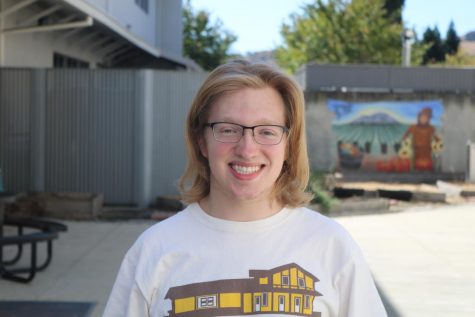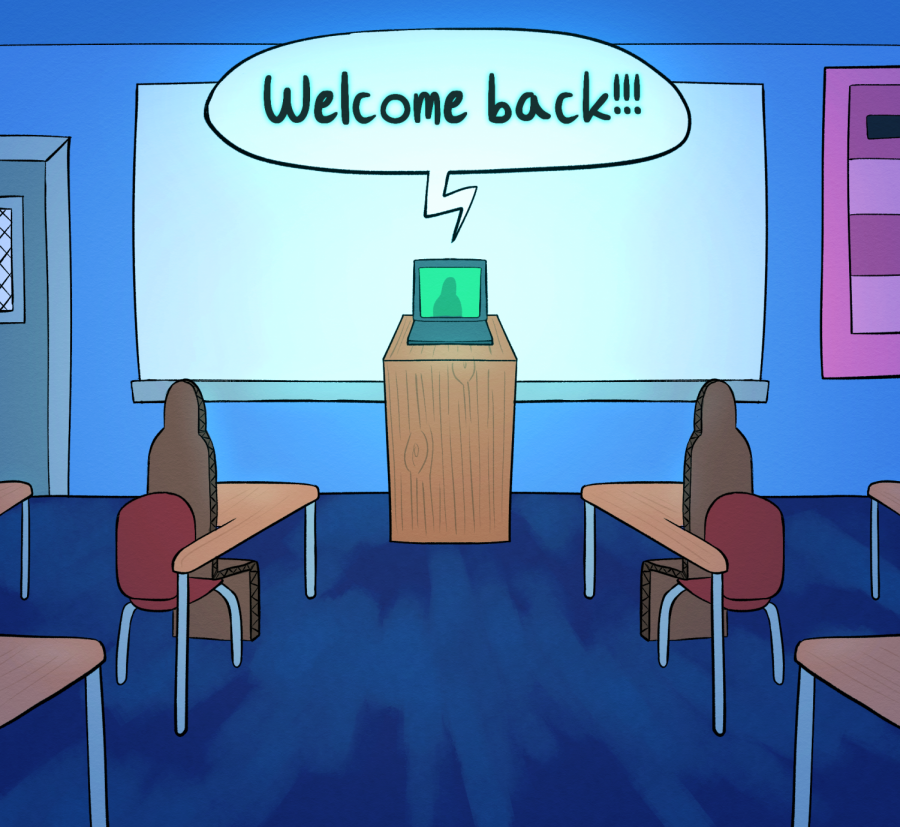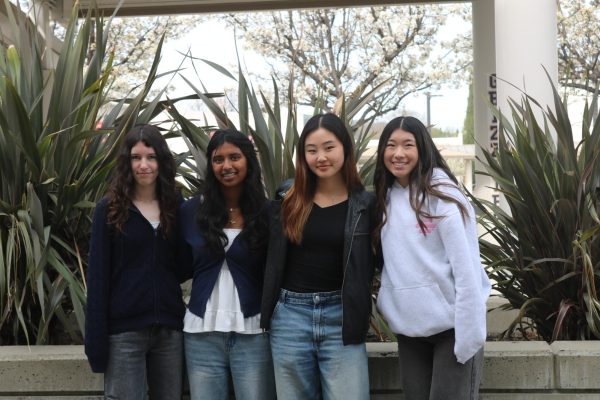Is this really the start of the school year or just an extended summer with homework?
Students and staff face a new set of challenges after opening with remote learning
Participation has been hard to do over a virtual platform.
Cal High students and staff returned to school earlier this month just as they have done in previous years with one major change – school is entirely remote.
After the San Ramon Unified School District Board of Education unanimously voted on July 16 to start the school year remotely because of the coronavirus pandemic, students and staff began classes on Aug 13 from the comfy confines of their bedrooms and home offices.
District students are not alone. Schools throughout Contra Costa County and much of the state are prohibited from opening their campuses to help prevent further spread of COVID-19, which has claimed more than 180,000 lives nationwide since March.
As a result, Cal students and staff have had to adapt to remote learning, which many expect will last through at least the first semester.
One of the many challenges students have been forced to overcome are the difficulties communicating with teachers and fellow classmates through online platforms such as Zoom and Google Meet.
“There are some connection errors and it’s a little hard to communicate, but for the most part [remote classes are] OK,” sophomore Kimi Young said.
Like many other students, Young is still getting accustomed to this new type of schooling and finds speaking up in class challenging.
“Participation is hard over Zoom, because multiple people will try and answer and talk over each other and there’s an awkwardness to it,” Young said.
Many students feel connecting with classmates has been much harder this year, especially when put into breakout rooms during class.
“I don’t like breakout rooms. Everyone’s wonderful, but it’s just so awkward and there’s like an unspoken tension if you don’t know anyone in your breakout room,” senior Keana Estorpe said. “As much as we all would like to get close with each other, there’s a wall, and we’re all still trying to adapt to such weird times.”
Estorpe has found it particularly hard to meet new people and ask teachers questions during class time as a result of having shorter class periods. Block periods Tuesday through Friday have been reduced 15 minutes to 85 minutes, while the new Monday schedule has all classes meeting for 35 minutes.
Under the in-person class schedule, Cal students only had a few days a year where all classes would meet during a school day.
This year’s freshmen class has it especially tough, having to not only adjust to remote classes but high school in general. For freshman Ethan Litvin, his online high school experience hasn’t been a huge adjustment.
Litvin said he was happy about the decision to continue with remote learning for the start of this school year despite ending his final quarter of middle school away from campus.
“I’m glad our district is playing it safe,” Litvin said. “You never know, [the coronavirus] could always spike back up again.”
Like many freshmen this year, Litvin was looking forward to the experiences that made in-person high school much different than middle school.
“I was hoping that going to high school would give me a little more freedom and that I was able to eventually experience driving a car to school,” Litvin said.
Despite not being able to have students on campus, Cal has tried to get freshmen connected, especially with the seniors who are taking Anja Wheeler and Troy Bristol’s new principles of leadership class. Seniors in the class take on the responsibility to connect with and advise a small group of freshmen, hopefully allowing new students an easier time integrating into high school.
Students are not the only ones adjusting to remote learning. Teachers have tried new and different styles of teaching without students in a classroom in order to keep class interactive and educational.
“They just try to make this different environment a learning environment,” Estorpe said. “I really appreciate how some of my teachers like Mrs. E or Mr. Vidrio have started us on class discussions or projects to keep us engaged.”
But the accommodations added to the curriculum which most teachers have used for years has made this new school year challenging and stressful for most of Cal’s staff.
“I’m trying to make [the students] feel connected through the screen as much as I can,” said Laura Woods, who teaches the theater classes, “and I’m exhausted.”
For some teachers, remote learning platforms have provided a way for social connections to continue.
“I think it’s harder to build community online but I already see students talking on [Zoom/Google Meets] chat rooms and helping each other,” PE and Health teacher Joe Sussman said. “It’s frustrating but you’re still connecting with students.”
Remote learning has provided an opportunity for teachers to experiment with new technologies, some which they could continue to use when school resumes in-person classes.
“I’ve tried Padlet, I’m trying Peardeck, I’m going to try Flipgrid at some point,” said Dan Sweetnam, who teaches world geography and psychology. “If it works then we’ll use it, if it doesn’t work then we’ll try something else. Hopefully we can learn some cool stuff this year and when we get back into the classroom we can continue to use some of it.”
Most teachers are making these adjustments while teaching from home, but some are still working from their classrooms.
In a Californian poll of school staff, 73 of 123 teachers and staff, or 59.3 percent, who responded indicated that they were working exclusively from home. Thirty one staff members (25.2 percent) responded that they are alternating between working from home and campus, while only 19 teachers and staff (15.4 percent) indicated they are working solely from campus.
“I’ve got kids at home and my wife works at home, and I don’t have a dedicated office space so it makes sense to be [on campus] where I have a quiet space with good internet connection,” Sweetnam said.
Other staff members are working from home for a variety of reasons, including comfort with tech setups and personal family reasons.
“I’m working from home exclusively because I have immunity issues in my family,” counselor Becky Bellini said.
Bellini and the rest of the counseling department have faced unique challenges to adapt to the virtual learning environment and made several changes as a result.
Counselors have created a senior survival guide with information about the college application process that can now be found online. Bellini believes it will be good for students and counselors to be able to access the packet whenever they want to.
Unfortunately, counselors are finding it difficult to reach students who need counseling.
“How do we find the students who need help but aren’t asking for it?” said Bellini, who noted it is difficult for teachers to evaluate if students need counseling when they are behind a screen. Counseling is also facing issues with when they can meet with students.
“We’ve been trying to figure out how meetings will work because students are in Zoom classes all day and we can’t just send them a green slip,” Bellini said.

Senior Nicholas Harvey is the Editor-in-Chief for The Californian. Writing for the paper since freshman year, Nicholas is especially interested in the...

Isabelle is contributing to her second year of newspaper as The Californian's online editor. After her first year as a reporter and artist at the publication,...

A senior at California High School, Rebecca Newman is a third-year newspaper student and is currently the graphics editor for the Californian. She spends...










